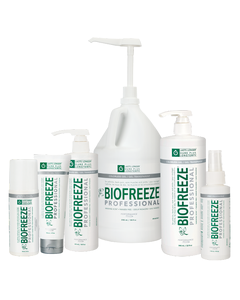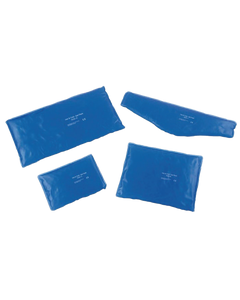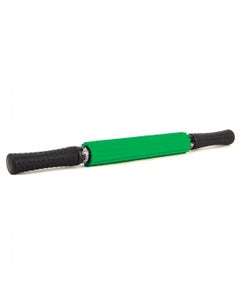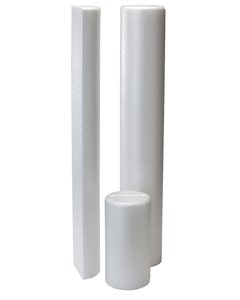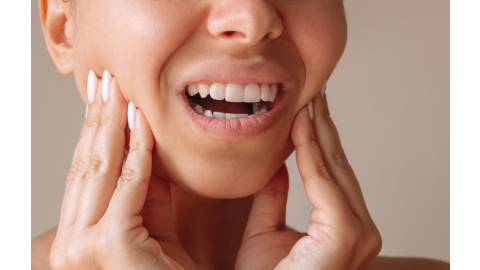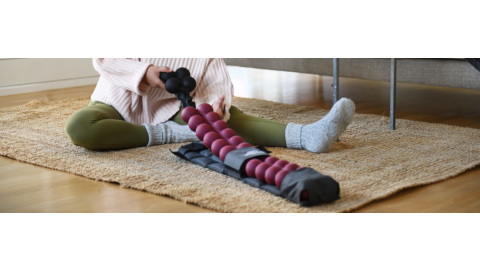Recovery is a crucial part of tennis training. With all of the practicing and playing tennis players do on a daily basis, active recovery is necessary to help athletes reach their full potential. Learn more about how to tennis player recovery, so they’re ready for their next match!
Key Takeaways
- Rest, hydration, nutrition, pain relief, massage, stretching, and psychological recovery are all key components of proper recovery.
- Overtraining can lead to burnout in athletes.
- Psychological recovery is just as important as physical recovery.
Top Products
Immediate Recovery After a Practice or Match
5 Essential Parts of Tennis Player Recovery
Overtraining Risks and Recovery
Recovery Recap
Immediate Recovery After a Practice or Match
Hydration
- After a practice or match, athletes should aim to consume 20 ounces of fluid (about the size of a regular water bottle) per pound of body weight lost during their practice/match.
Nutrition
- Eat a recovery snack that’s around 200-400 calories of carbohydrates. For example, chocolate milk, a recovery shake, or a six inch sub with meat or fish are all great choices.
Stretching
- Be sure to have athletes stretch afterwards to reduce stiffness and improve their range of motion.
Pain Relief & Hydrotherapy
- Relieve any post-match pain with Biofreeze. The cooling gel was found to be better at relieving pain than ice.
- Try hydrotherapy to enhance an athletes’ recovery. Taking a warm bath in 93-97° water increases blood flow, while a cold 50-59° bath helps reduce the sensation of DOMS (delayed onset muscle soreness). Alternate between the two to increase metabolic activity.1
5 Essential Parts of Tennis Player Recovery
1. Hydration
Hydration is a key part of recovery. Even a 2% loss of body weight due to dehydration can have a major negative effect on muscle strength and power.1 Athletes should drink a fluid volume that’s equal to the amount they lost from sweating. The goal should be to drink 20 oz. to every pound of body weight lost during the match. Athletes should drink the fluid slowly; they shouldn’t chug it. If their goal is to drink 32 ounces, aim for 5 ounces every ten minutes, not 16 ounces every half an hour.
In addition to water, flavored sports drinks are a great source of hydration. In fact, one study found that athletes drink 30% more fluid when using flavored drinks compared to plain water.1 Recovery drinks also help replace the sodium lost and stimulate glucose (energy) absorption.
2. Nutrition
Nutrition is another important aspect of recovery. Proper nutrition creates new muscle proteins and restores the immune system. It also replenishes the nutrients and fluids used while playing.
After a practice or match, athletes should eat a recovery snack (recovery shake, banana, sandwich, etc.). Within three hours, they should follow this snack with a substantial, healthy meal, like chicken, pasta, fish, vegetables, rice, salad, beans, eggs, potatoes, or steak. At the end of a tournament day, add a light snack before bed, like a glass of milk, crackers with tuna, or a low sugar shake. After a tournament, add in more fruits high in vitamin C and antioxidants, like oranges or berries.
3. Sleep & Rest
Getting enough sleep and rest are also important forms of recovery. Athletes should get 7-9 hours of sleep every night. Adolescent players may need 10 or more hours when going through a growth spurt. If an athlete has trouble sleeping, encourage them to try powering down electronics and creating a peaceful nighttime ritual. If the sleeping problems are due to back pain, these pillows can help.
Naps can also be beneficial, improving alertness and performance, as long as they are kept to 15-30 minutes in length. Any longer, and an athlete will wake up groggy and sluggish instead of alert.
Rest is another crucial part of recovery. Make sure athletes have at least one active rest day a week (don’t let them spend the whole day on the couch!). Athletes should use this time to socialize with friends or play a less demanding sport, like golf or swimming. Recharging and adding in cross training will help prepare them for future practices.
4. Musculoskeletal & Physical Recovery
After practicing or playing, athletes need to stretch to keep their muscles in top shape. Increase flexibility and relieve stiffness by using the THERABAND® Stretch Strap. It’s the perfect companion for any athlete’s static and dynamic stretching needs. Their shoulders, hips, hamstrings, calves, and more, can enjoy a satisfying stretch using the strap.
Another common problem athletes face after playing is muscle soreness. Cryotherapy using Performa Hot & Cold Packs can help relieve your pain. The same packs can be microwaved if heat soothes the aches better. For immediate, on-the-go relief, try Biofreeze – the cooling analgesic comes in gel, spray, and roll-on forms for quick relief. Recovery can also be enhanced with massage. Use the THERABAND Massage Roller+ to roll out large muscle groups at home. Athletes should try to fit in one self-massage every day. Then weekly, have them get a massage by a professional or partner using Bon Vital Complete Massage Creme.
5. Psychological Recovery
Mental recovery after a match is just as important as physical recovery. If an athlete doesn’t take the time to recoup, it can lead to overtraining fatigue and burnout. Make sure players take time to relax, watch a funny movie, or spend time with friends to take their mind off of training.
Another stressor can be how to handle losses. At the end of a tournament, only one player has made it through without losing. While it’s okay for athletes to be disappointed and voice their feelings to a friend or family member, they shouldn’t obsess about the loss.
Instead, have them focus on what they gained: “I got to play one of the best players in the U.S.,” or “My serve was better this match!” Have them focus on what they’ve learned and how to improve going forward: “My shots weren’t sharp enough, I need to practice to improve for my next match,” or “I forgot my opponent has such a good backhand, I’ll be prepared for that next time.”
Looking ahead to the next match or tournament can help athletes move past a disappointing loss and on to their next win.

Overtraining Risks and Recovery
Overtraining syndrome affects as many as 20% of elite athletes.1
It’s defined as “a condition of fatigue and underperformance often associated with frequent infections and depression which occurs following hard training and competition. The symptoms do not resolve despite two weeks of adequate rest and there is no other identifiable cause.”1
The fatigue, apathy, and burnout can lead to lower performance. While some cases of burnout can lead to players that stop competing, other players compete with high levels of stress and play less effectively.
Psychological Symptoms
- Mental exhaustion
- Increased irritability
- Increased anger
- Emotional exhaustion
- Sadness
- Increased depression
- Decreased self-esteem
- Reduced motivation
Factors that Increase the Risk of Burnout
- Perfectionist tendencies
- Perceived high expectations from key individuals
- Negative parental involvement
- Feelings that the player has less input in training
- Not using planning strategies, like goal setting
How to Prevent Burnout
- Make sure athletes get sufficient recovery after playing tennis and enough rest
- Athletes should have people who can provide:
- Listening Support
- Someone who can listen without judgement and without giving unrequested advice, like a parent or close friend
- Emotional Support
- Someone who can provide unconditional support and care
- Emotional Challenge Support
- Someone who can challenge athletes in their personal growth
- Reality Confirmation Support
- Someone who sees things in the same manner or can share an athlete’s experiences, like a fellow tennis player
- Task Appreciation Support
- Someone who appreciates and acknowledges the athlete’s efforts, like a parent or a coach
- Task Challenge Support
- Someone who provides support and guidance to help improve a player’s tennis skills, like a coach
- Personal Assistance Support
- Someone who can help with financial or other means of tangible support (funds, transportation, etc.)
- Be aware of the potential for burnout in young athletes and help prevent it:
- Aim for 1-2 days per week without tennis practice or matches to give players time for rest and recovery
- Don’t increase weekly training time by more than 10%
- Ideally, young players should take 2-3 months off per year from tennis
- Emphasize a focus on fun, sportsmanship, safety, and skill building over winning
- Watch for signs of burnout, including muscle pain, poor school performance, and fatigue
Recap
Recovery is a crucial part of an athlete’s training. Rest, hydration, nutrition, pain relief, massage, stretching, and psychological recovery are all key components that help keep players on the court. Be aware of the signs of burnout in athletes and take action to keep them rested and ready to play.
References
- Sport Science Committee of the United States Tennis Association. (n.d.). Recovery in Tennis A Guide to Improving Performance and Limiting Injury Through Improved Recovery. USTA. Retrieved from https://bit.ly/2JECoxU
- Heitler, S. (2011). What Tennis Players Understand About Handling Losses. Psychology Today. Retrieved from https://bit.ly/2XLDhJK
Medical Disclaimer: The information provided on this site, including text, graphics, images, and other material are for informational purposes only and are not intended to substitute for professional medical advice, diagnosis, or treatment. Always seek the advice of your physician or other healthcare professional with any questions or concerns you may have regarding your condition.

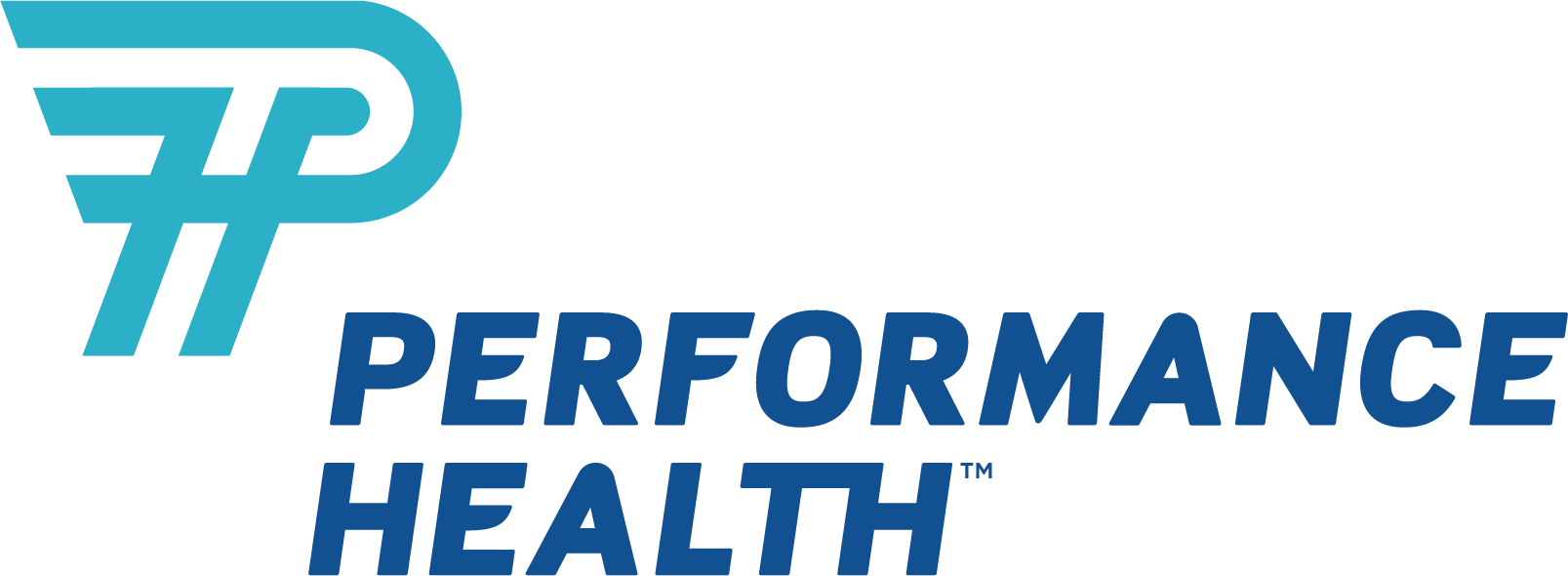





 US
US France
France Australia
Australia
